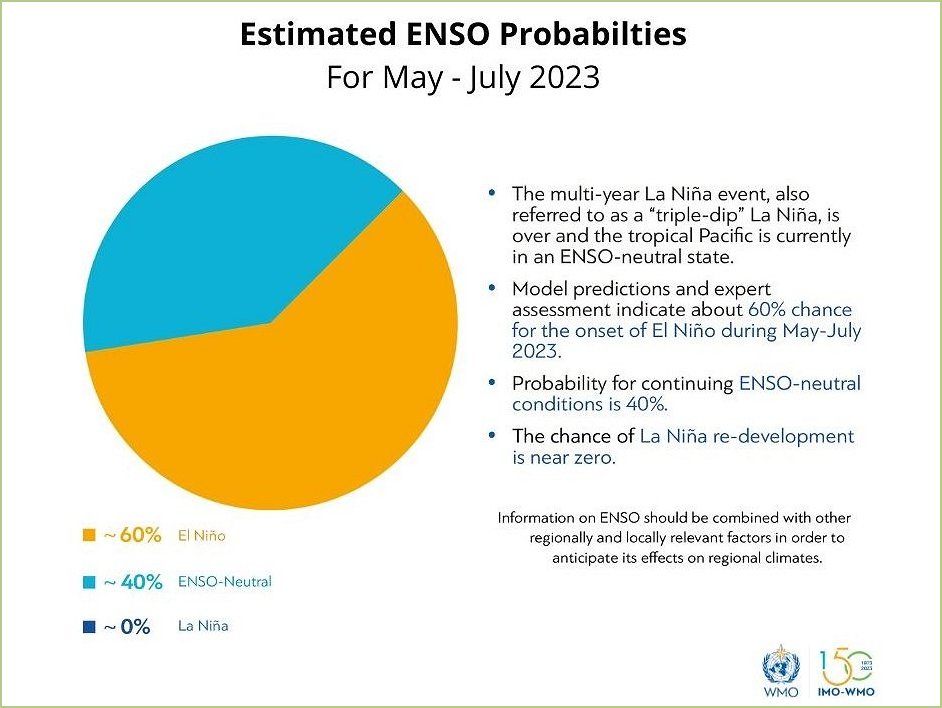
WMO: Prepare for El Niño

By the Climate Centre
The probability of El Niño developing later this year is increasing, the World Meteorological Organization said today, putting it at 60 per cent by July rising to 80 per cent by September (infographic).
“At this stage there is no indication of the strength or duration of [any] El Niño,” the WMO said in its latest ENSO Update issued today.
The persistent La Niña has now ended after three years in a row and the tropical Pacific is currently in an ENSO-neutral state; that is, neither El Niño nor La Niña.
La Niña, a cooling of the ocean in the central and eastern equatorial Pacific, usually has impacts on weather and climate opposite to El Niño warming.
El Niños are associated with increased rainfall in parts of southern South America, the southern US, the Horn of Africa, and central Asia, the WMO says; they can also cause droughts in Australia, Indonesia, and parts of southern Asia, fuelling hurricanes in the Pacific and hindering them in the Atlantic.
Above-normal temperatures?
WMO Secretary-General Petteri Taalas said: “We just had the eight warmest years on record, even though we had a cooling La Niña for the past three years and this acted as a temporary brake on global temperature increase.
“The development of an El Niño will most likely lead to a new spike in global heating and increase the chance of breaking temperature records.
He added that El Niño “might bring respite from the drought in the Horn of Africa and other La Niña-related impacts but could also trigger more extreme weather and climate events.”
Last week’s Global Seasonal Climate Update from the WMO, meanwhile, incorporating other major climate drivers such as the North Atlantic Oscillation, the Arctic Oscillation, and the Indian Ocean Dipole, says warmer-than-average sea temperatures are generally forecast worldwide, contributing to “widespread prediction of above-normal temperatures over land”.
That update adds: “Without exception, positive temperature anomalies are expected over all land areas in the northern and southern hemisphere.”
(Image: WMO)